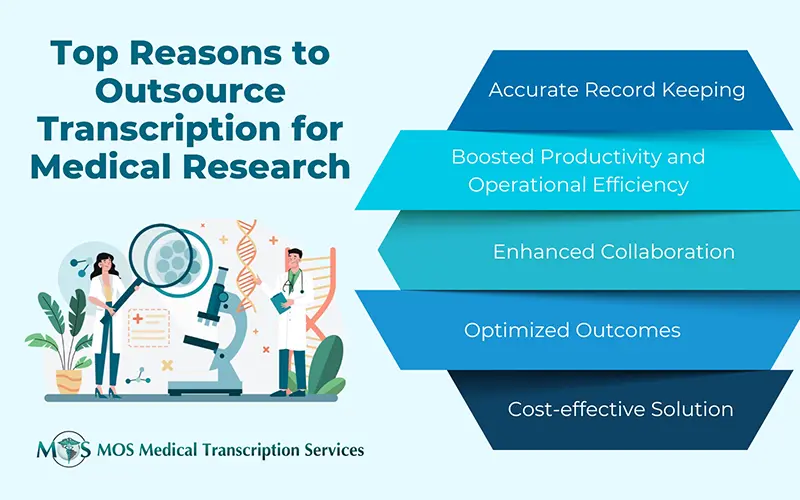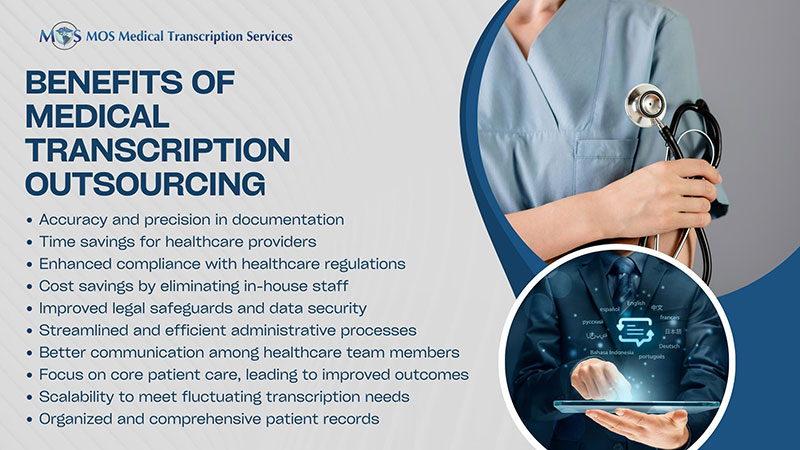 Many hospitalists and primary care physicians rely on medical transcription outsourcing to meet their documentation needs. The primary goal of patient care documentation is to communicate vital information about the patient to all the healthcare providers involved in caring for the patient. However, recent reports indicate that the gap between inpatient and outpatient physicians has widened over the years. Hospitalists have now become important players in the nation’s healthcare system, while primary care providers practice outside the hospital. The lack of proper communication between these two groups affects care transition and quality of care.
Many hospitalists and primary care physicians rely on medical transcription outsourcing to meet their documentation needs. The primary goal of patient care documentation is to communicate vital information about the patient to all the healthcare providers involved in caring for the patient. However, recent reports indicate that the gap between inpatient and outpatient physicians has widened over the years. Hospitalists have now become important players in the nation’s healthcare system, while primary care providers practice outside the hospital. The lack of proper communication between these two groups affects care transition and quality of care.
The key issues associated with the lack of coordination between specialists and primary care providers are:
- The greater the number of physicians involved in a patient’s care, the higher the risks of miscommunication and discoordination, especially during admission and discharge
- Gaps between primary care providers and hospitalists may result in failures to follow up on test results and treatment recommendations
- Poor transitions reduce the quality of care and cause patient dissatisfaction
Many studies have highlighted the chasm between inpatient and outpatient care.
In 2010, Internal Medicine reported on a study by the Association of Community Cancer Centers (ACCC) which found that only a few hospitals were tracking readmissions or following up with discharged patients. While 85% of responding hospitals had a process to manage transitions from inpatient to outpatient settings, only 55% had a formal transition policy. Only 3% of the hospitals had a specific transition policy for oncology patients.
A recent article published by Hospitals and Health Networks suggests the following strategies to improve care transitions and keep patients healthy:
- Remodeling governance: Hospital governance should be restructured to include both inpatient and outpatient physicians and improve communication between them. The article mentions the case of a Wisconsin medical center that set up a physician advisory group with chairs of medical subspecialties. At each meeting, hospital-based physicians give a short presentation on a recent episode at their specialty practice, which promotes better engagement between new and younger physicians and these physicians. This makes primary care providers feel more comfortable making a referral.
- Co-training: Co-training programs develop empathy between specialists and primary care providers. By providing valuable information, such programs can improve engagement among them.
- Electronic health record (EHR) interoperability: Technology can enhance inpatient and outpatient communication. For example, a shared electronic health record or using health information exchanges to notify physician of a patient’s admission can improve communication between inpatient and outpatient physicians. Messaging tools and blogs are also useful tools to enhance provider engagement.
- Continual evaluation and evolution: An unbiased, continuous evaluation system can help determine if building an unbiased evaluation forum can ensure that your efforts to improve primary care and specialist physician relations are meeting patient needs as well as those of physicians and staff. Strategies can be developed to close gaps if any.
A medical transcription service company plays an important role in providing accurate documentation to manage transitions of care. Error-free medical transcripts of patient history, treatment, and discharge summaries ensure continuity of care in the future, especially for inpatients who require care after discharge. Quality documentation provides a database from which important information can be extracted and used in potential medical contingences.


